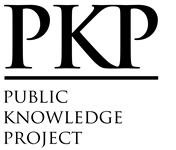Vegetative Characteristics of Sage-grouse Nesting and Brood Rearing Sites
Abstract
Vegetative characteristics of 146 greater sage-grouse (Centrocercus urophasianus) nest sites and 48 brood rearing sites were compared with paired random sites to determine if hens were selecting sites with certain vegetative attributes at three study areas in central Montana in 2003 and 2004. Ninety-seven percent of all nest locations and 92% of all brood rearing locations were in Wyoming big sagebrush (Artemisia tridentata Nutt. ssp. wyomingensis Beetle & Young) plants. Therefore, only attributes of Wyoming big sagebrush plants were analyzed. Shrub characteristics such as percent cover, density (shrubs/m2), average shrub height (cm), nest shrub height (cm) and nest shrub production (g/shrub) were recorded. Herbaceous measurements such as forb cover (%), grass cover (%), total cover (%) and grass height (cm) were recorded. Sage-grouse hen nest sites had greater (P ≤ 0.05) average shrub height (36 vs 31 cm) and more (P ≤ 0.05) nest shrub production (55 vs 48 g/shrub) than random sites. There were no differences in sagebrush cover density or nest shrub height or any herbaceous characteristics between nest and random sites. Fifty percent of all nests were successful. Successful nest sites were not different from unsuccessful nest sites in any shrub or herbaceous component. There were no differences in shrub or herbaceous measurements between yearling and adult nest sites. Shrub and herbaceous characteristics of brood sites did not differ from random sites. Average shrub height was greater (P ≤ 0.05) for adult brood rearing sites compared to yearling sites (35 vs 31 cm). Brood site shrub cover was less (P < 0.05) than nest shrub cover (14 vs 21%). Our results suggest that even though nesting sage-grouse hens selected for taller and more productive Wyoming big sagebrush plants, these attributes did not improve nesting success. Grazing guidelines suggested to increase herbaceous vegetation may not improve nesting or brood rearing success. Although brood rearing vegetative characteristics were lower (P £ 0.05) in sagebrush cover and production than nesting sites, managers should not reduce Wyoming big sagebrush cover or production to emphasize one stage of sage-grouse production since this plant is vital for all life phases.
Full Text:
PDFDOI: https://doi.org/10.5296/emsd.v6i1.11090
Refbacks
- There are currently no refbacks.
Copyright (c) 2017 Vanessa Lane, Jenny Sika, Carl Wambolt, Michael R. Frisina, Bok Sowell

This work is licensed under a Creative Commons Attribution 4.0 International License.
Environmental Management and Sustainable Development ISSN 2164-7682
Copyright © Macrothink Institute
To make sure that you can receive messages from us, please add the 'macrothink.org' domain to your e-mail 'safe list'. If you do not receive e-mail in your 'inbox', check your 'bulk mail' or 'junk mail' folders.
------------------------------------------------------------------------------------------------------------------------------------------------------------------------
